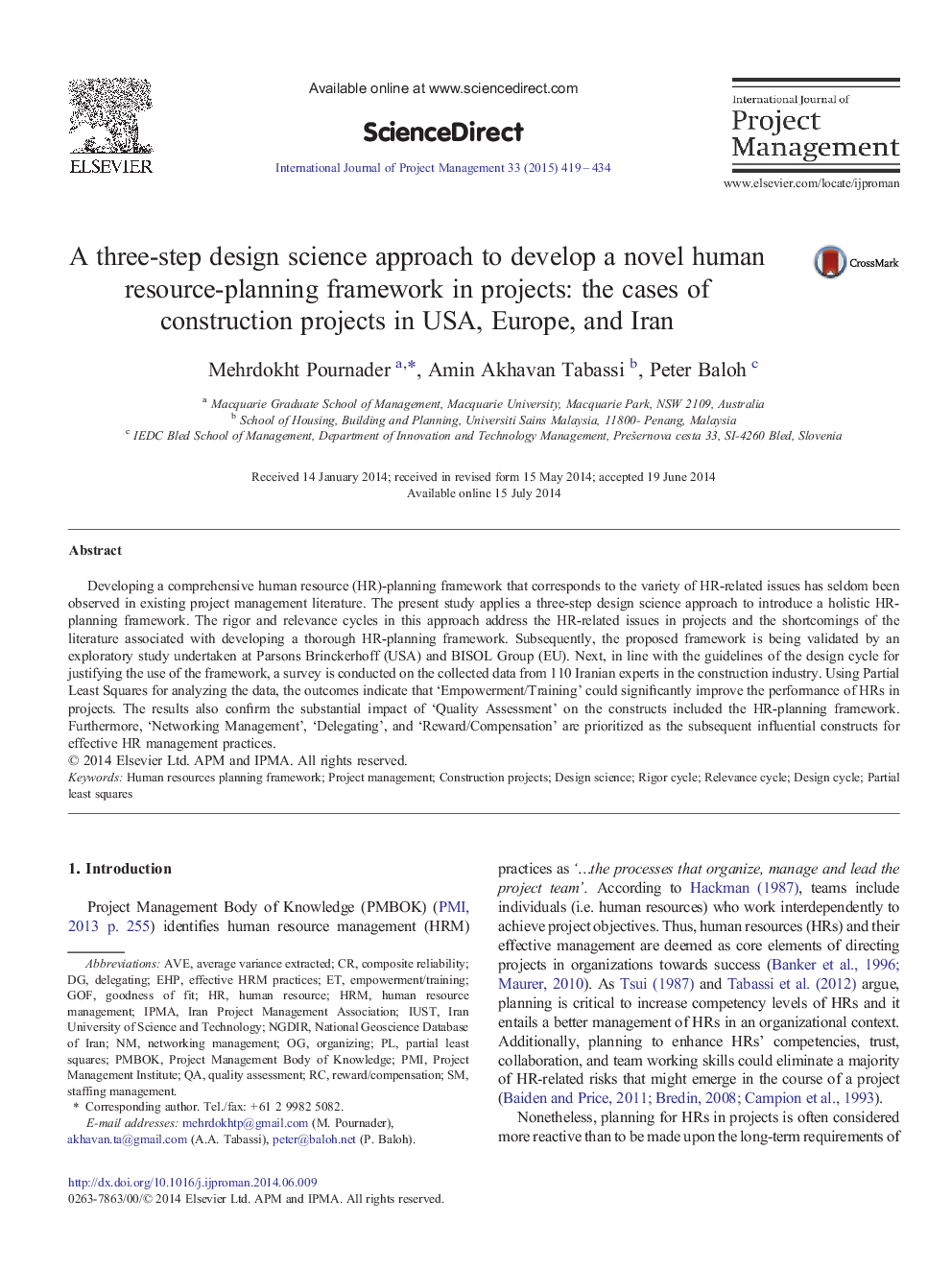| Article ID | Journal | Published Year | Pages | File Type |
|---|---|---|---|---|
| 275747 | International Journal of Project Management | 2015 | 16 Pages |
•The research adopts design science approach to develop a comprehensive human resource-planning (HR-planning) framework.•Shortcomings of the existing literature and PMBOK in addressing HR-related issues in projects are enumerated.•PLS analysis reveals the impact of identified constructs within the framework on HRM practices.•The application of Goodness of Fit (GoF) in the PLS analysis confirms the overall fit of the framework.•The findings reveal that ‘Empowerment/Training’, ‘Quality Assessment’, and ‘Delegating’ constructs are the most influential constructs on HRM practices in projects.
Developing a comprehensive human resource (HR)-planning framework that corresponds to the variety of HR-related issues has seldom been observed in existing project management literature. The present study applies a three-step design science approach to introduce a holistic HR-planning framework. The rigor and relevance cycles in this approach address the HR-related issues in projects and the shortcomings of the literature associated with developing a thorough HR-planning framework. Subsequently, the proposed framework is being validated by an exploratory study undertaken at Parsons Brinckerhoff (USA) and BISOL Group (EU). Next, in line with the guidelines of the design cycle for justifying the use of the framework, a survey is conducted on the collected data from 110 Iranian experts in the construction industry. Using Partial Least Squares for analyzing the data, the outcomes indicate that ‘Empowerment/Training’ could significantly improve the performance of HRs in projects. The results also confirm the substantial impact of ‘Quality Assessment’ on the constructs included the HR-planning framework. Furthermore, ‘Networking Management’, ‘Delegating’, and ‘Reward/Compensation’ are prioritized as the subsequent influential constructs for effective HR management practices.
